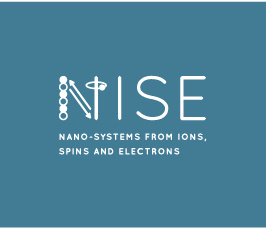Scanning probe microscopy in quantum nanoscience
- Datum: 02.08.2018
- Uhrzeit: 11:00
- Vortragende(r): Dr. Soo-Hyon Phark
- Center for Quantum Nanoscience (QNS), Institute for Basic Science (IBS), Ewha Womans University
- Ort: Max-Planck-Institut für Mikrostrukturphysik, Weinberg 2, 06120 Halle (Saale)
- Raum: Lecture Hall, B.1.11

Quantum nanoscience is a rather new research field that attempts to merge the benefits of quantum science and nanoscience and access nanoscale quantum systems in a solid-state environment. Both disciplines have made major advances over the last two decades, for example towards quantum teleportation and quantum computation in quantum science and towards atomic-scale control and assembly of nanostructures.
In the first part of this talk, I introduce how we utilize the scanning probe microscopy (SPM) to perform quantum nanoscience researches in the Center for Quantum Nanoscience (QNS). One of the key research techniques in QNS is SPM, in particular scanning tunneling microscopy (STM). Further, spin-resolved measurement in STM is a key technical step to access the magnetic interactions and quantum states of nanoscale structures on surfaces. Spin-STM combined with electron spin resonance technique enables atomic-scale resolution combined with direct access to the quantum states of well-defined magnetic atoms and molecules on surfaces. This is a remarkable advance in the STM, to be a promising way towards quantum control of individual atoms and molecules. In the future, QNS will utilize such quantum systems as quantum sensors, which offer superior sensitivity and possibly towards quantum bits.
In the second part, I introduce an interesting result of spin-STM, obtained from bilayer-high Co nanoislands on Cu(111) with Fe-coated W tips and performed using a liquid 4He-bath high field low-temperature STM in Halle. Superparamagnetic response of tip magnetization quantitatively measures the sample-induced field at the tip position. Spin-STM with a varying tip-sample distance revealed a crossover between long- and short-range magnetic couplings, which demonstrates a novel method of quantitative measurement of magnetic couplings in an atomic scale magnetic tunneling junction with a simple and precise control of its tunnel barrier thickness.
In collaboration with Andreas J. Heinrich